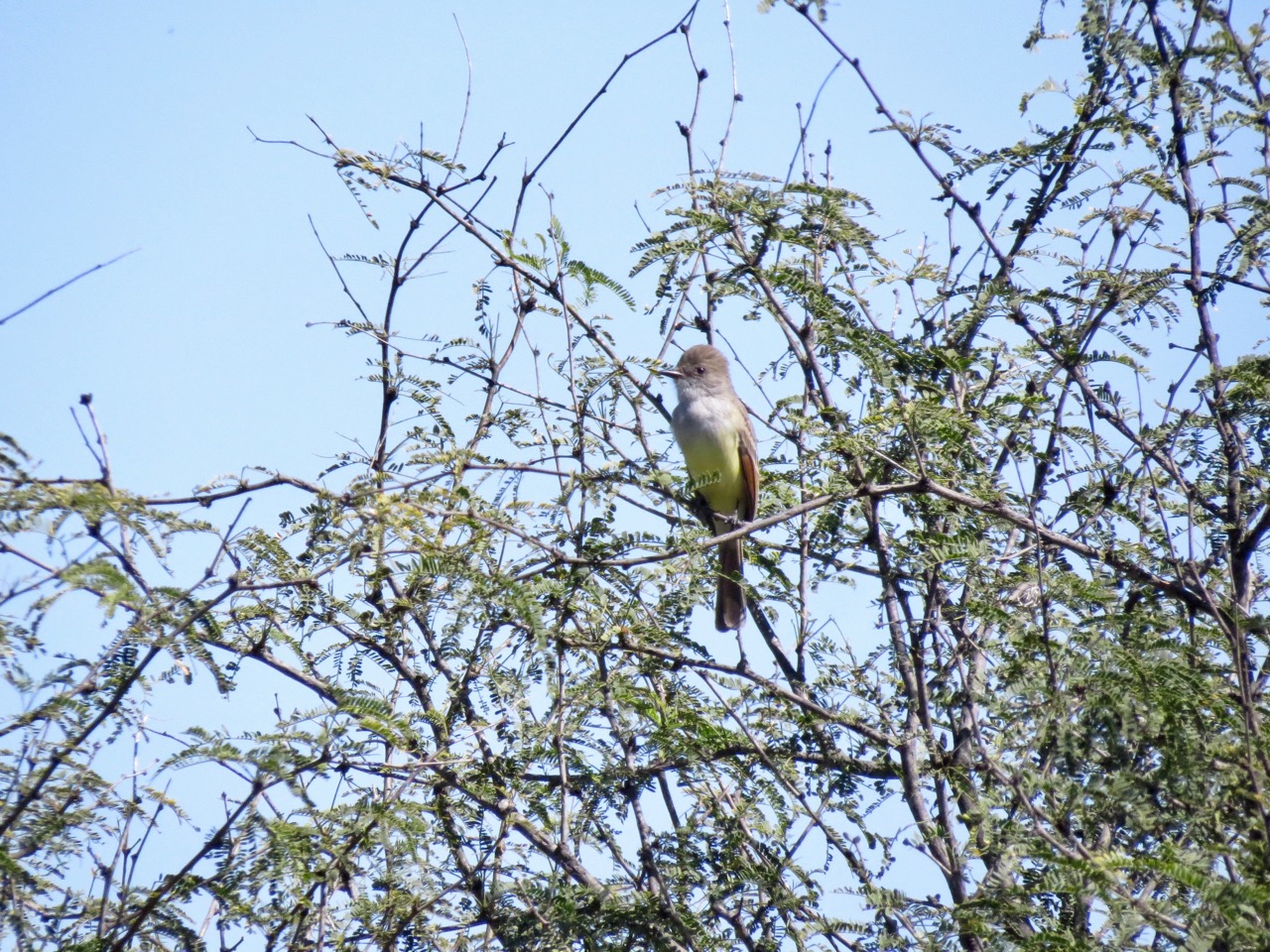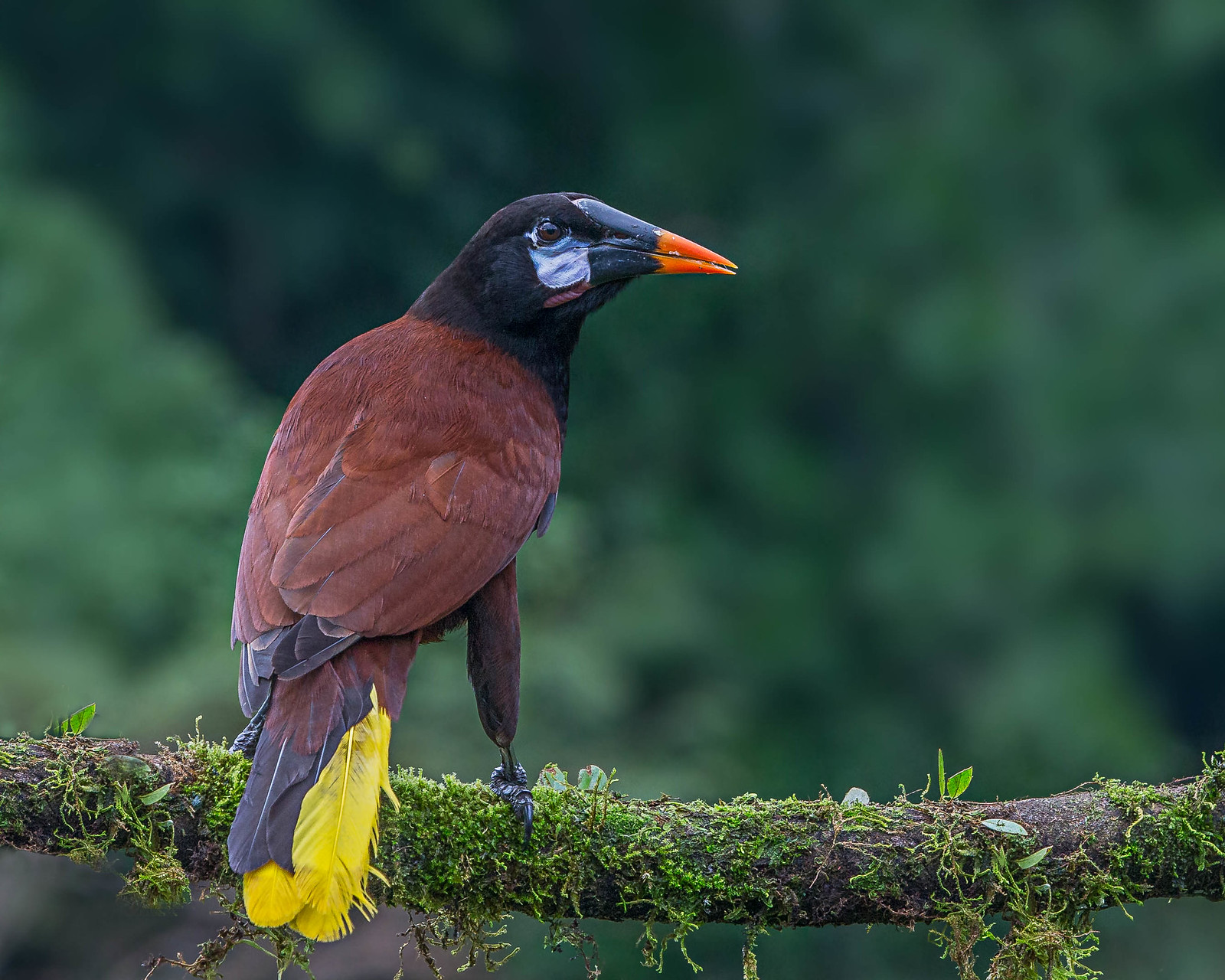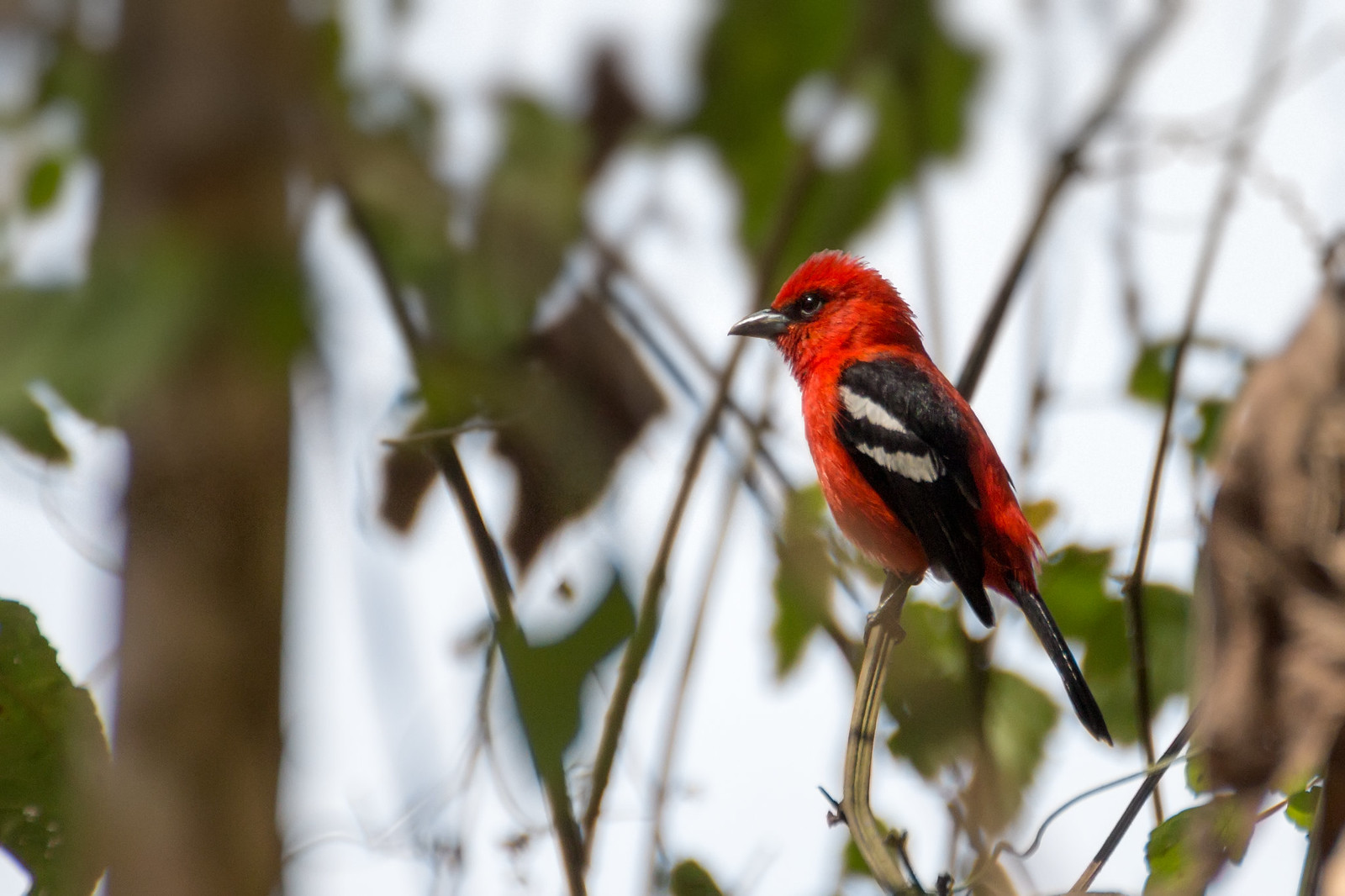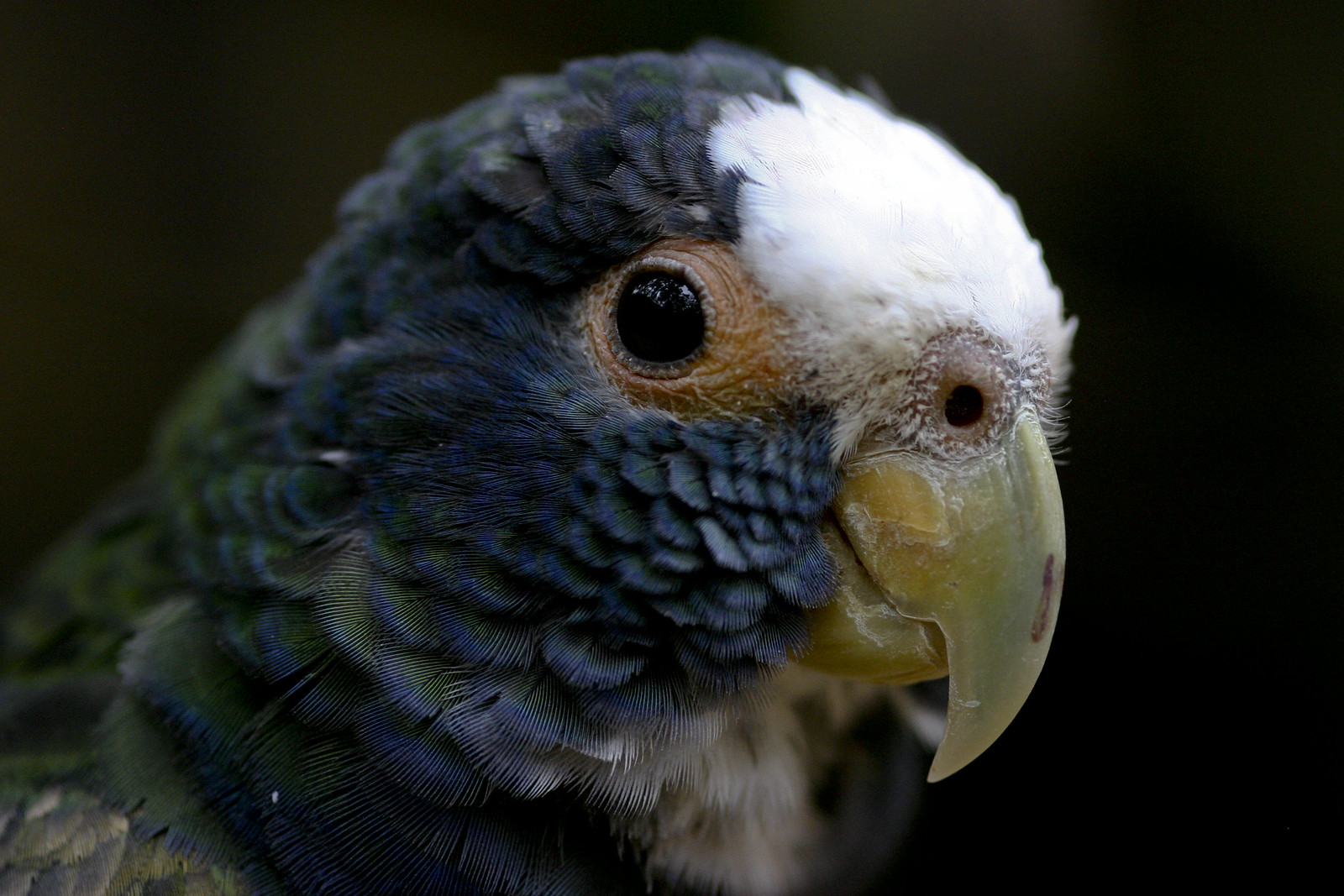
DAY THREE – CUATRO PALOS AND PINAL DE AMOLES
We were up early for the drive to Cuatro Palos. Our trip wound us along steep-sided mountain roads with stunning views. Little did we know that some of the best vistas were still to come. As we approached Cuatro Palos, we passed clearings with small farms and ranches and stopped when birds were spotted. Vaux’s Swifts and Black and Turkey Vultures with a few Chihuahuan Ravens soared overhead. Noisy, restless flocks of Mexican Jays, very difficult to photograph, entertained us as did Acorn Woodpeckers, the rodeo clown of woodpecker species.



At last, we arrived in the village. Cuatro Palos (four poles) was named after a large tree with four prominent trunks. It was a meeting place for locals in the past but only the name has endured today. We got out of the van and were met by masked, Covid-conscious biosphere employees. Most of our group took advantage of the baños (bathrooms) and the little shop (tienda) and then a trail guide led us up a very steep slope, as if we weren’t high enough already.

As we climbed, we enjoyed the breath-taking views and the local colour. There are several pinpoints around the pond in the photo below. Those are cows. As we trudged upward, a man herded his flock on a descent to the pond. Wildflowers, still bursting with vitality after the recent rainy season, and the giant asparagus stems of mature agave plants surrounded us.




Trees began to line the route of our ascent. With the trees, we began to see more birds but we also were a bit shocked to see something else. Grotesque figures hung from branches everywhere. These were associated with the recent Dia de los Muertos festival (Day of the Dead) and referred to the years of religious strife that began in 1917. Apparently, the puppets were numbered because they were part of a contest. Our trail guide had created one of them so we stuffed the ballot box when we returned to the village later on. Many of the puppets invoked popular culture.




It was quite a climb! Eventually, we made it to the top. Good looks were enjoyed of more Acorn Woodpeckers as well as Yellow-eyed Juncos and a Canyon Towhee that was a long way from a canyon. Note the chestnut-coloured vent on the Canyon Towhee, just like a Gray Catbird.




Ruby-crowned Kinglets were common and provided a good ID challenge in the presence of Hutton’s Vireos. We saw several other familiar species; American Robin, Eastern Phoebe, Eastern Bluebird, Orange-crowned Warbler and Blue-gray Gnatcatcher (known as La Perlita, the Little Pearl. What a sweet name!) Less familiar were Hepatic Tanager, Townsend’s Warbler and others. Our trail meandered through a forested area before dropping back down to the village.




It was time for lunch and we boarded the van for Pinal de Amoles, an old mining town. The architecture (such as the sloping roofs) was introduced by the Cornish miners who arrived in Mexico in the early 1800s. They also brought Cornish pasties to their new home but Mexico may be more grateful for another gift; soccer!!! I was looking forward to a cerveza and a tasty meal. I had no way of knowing that my first lifer of the trip was to be a lunchtime surprise!


Our restaurant was also a small hotel. As we ate, Rodrigo’s sharp ear caught something out back in the courtyard. A wall of gorgeous flowers had attracted a few Blue-throated Mountain-gems (formerly the more prosaically named Blue-throated Hummingbird). We crept along a terrace outside the hotel rooms, as the housekeeping staff watched with curiousity, and soon our cameras were zooming in and out.


It was a lovely sighting but it wasn’t the lifer that I hinted at previously. Rodrigo noticed something else furtively darting about in the thicket of leaves and flowers; a Cinnamon-bellied Flowerpiercer!!! What a beauty and even more special as it would prove to be the only one seen on our entire tour. Note the ‘crossbill’ on this tiny bird.


After lunch, I wandered past shops on the main street and was deflated by the sight of several cages of Brown-backed Solitaires. These birds are inveterate, year-round singers and are trapped and kept for that reason.

There was more driving ahead but our next lodgings were only about thirty minutes outside of Pinal de Amoles. We shared a large well-appointed cabin (Cabañas Terrazul) near the mountain village of Puerto de Rodezno. It was quite cool and we made good use of the fireplace as a local woman and her daughter prepared a hearty dinner for us. The views were terrific again although we soon lost the sun. We couldn’t wait for first light and birding the immediate area in the morning.









































































































































